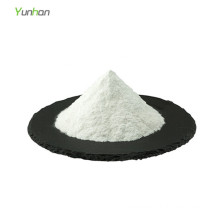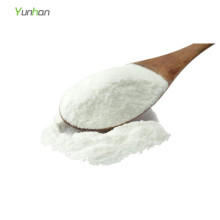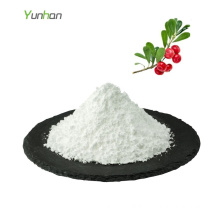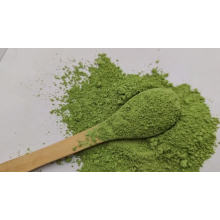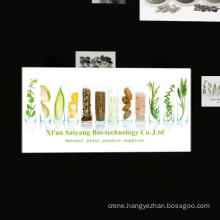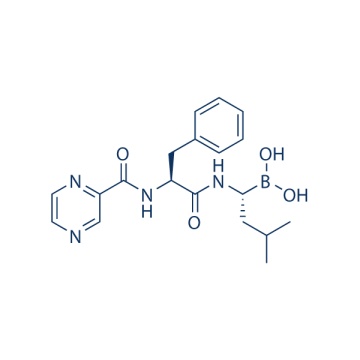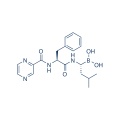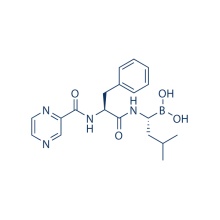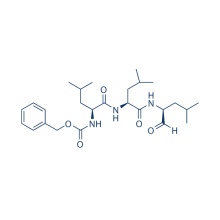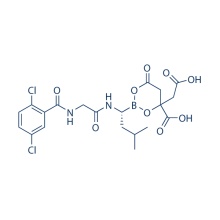TTNPB (Arotinoid Acid) 71441-28-6
Product Description
.cp_wz table {border-top: 1px solid #ccc;border-left:1px solid #ccc; } .cp_wz table td{border-right: 1px solid #ccc; border-bottom: 1px solid #ccc; padding: 5px 0px 0px 5px;} .cp_wz table th {border-right: 1px solid #ccc;border-bottom: 1px solid #ccc; padding: 5px 0px 0px 5px;}
Molecular Weight: 348.48 TTNPB (Arotinoid Acid) is a potent RAR agonist, and inhibits binding of [3H]tRA with IC50 of 5.1 nM, 4.5 nM, and 9.3 nM for human RARα, β, and γ, respectively.
TTNPB binds to nuclear retinoic acid receptors with high affinity, inhibits binding of [3H]tRA with IC50 of 3.8 nM, 4.0 nM, and 4.5 nM for mRARα, β, and γ, respectively. TTNPB increases transcriptional activation of Mouse RARs in JEG-3 cells
after 72 h using conditioned media with EC50 of 2.0 nM, 1.1 nM and 0.8
nM for mRARα, β, and γ, respectively. TTNPB inhibits the
growth of normal human mammary epithelial cells (HMECs) and estrogen
receptor-positive (ER-positive) breast cancer cells by inducing G1 cell
cycle blockade. TTNPB causes a concentration-dependent decrease in ES-D3 cell differentiation.
Protocol(Only for Reference)
Kinase Assay: [1]
Cell Assay: [3]
Animal Study: [5]
Conversion of different model animals based on BSA (Value based on data from FDA Draft Guidelines)
For example, to modify the dose of resveratrol used for a mouse (22.4 mg/kg) to a dose based on the BSA for a rat, multiply 22.4 mg/kg by the Km factor for a mouse and then divide by the Km factor for a rat. This calculation results in a rat equivalent dose for resveratrol of 11.2 mg/kg.
Chemical Information
Contact us if you need more details on TTNPB 71441-28-6. We are ready to answer your questions on packaging, logistics, certification or any Other aspects about Arotinoid Acid 71441-28-6、71441-28-6 TTNPB. If these products fail to match your need, please contact us and we would like to provide relevant information.
Molecular Weight: 348.48 TTNPB (Arotinoid Acid) is a potent RAR agonist, and inhibits binding of [3H]tRA with IC50 of 5.1 nM, 4.5 nM, and 9.3 nM for human RARα, β, and γ, respectively.
TTNPB binds to nuclear retinoic acid receptors with high affinity, inhibits binding of [3H]tRA with IC50 of 3.8 nM, 4.0 nM, and 4.5 nM for mRARα, β, and γ, respectively. TTNPB increases transcriptional activation of Mouse RARs in JEG-3 cells
after 72 h using conditioned media with EC50 of 2.0 nM, 1.1 nM and 0.8
nM for mRARα, β, and γ, respectively. TTNPB inhibits the
growth of normal human mammary epithelial cells (HMECs) and estrogen
receptor-positive (ER-positive) breast cancer cells by inducing G1 cell
cycle blockade. TTNPB causes a concentration-dependent decrease in ES-D3 cell differentiation.
Protocol(Only for Reference)
Kinase Assay: [1]
| Binding assays | Binding assays are performed as previously described (Allenby et al., 1993, 1994). Briefly, labeled and unlabeled retinoids are added to nucleosol or cytosolic fractions in ethanol so that the total amount of ethanol added is constant in all tubes and did not exceed 2% of the incubation volume. The receptor preparations are incubated with retinoids at 4°C for 4–6 hr. Sephadex PD-10 desalting columns are used to separate bound radioligand from free radioligand after equilib- rium is achieved. For competitive binding assays, varying concentrations of unlabeled competing ligand are incubated with the appropriate nucleosol or cytosol in the presence of a fixed concentration of [3H]tRA (sp. act. 49.3 Ci/mmol) or [3H]9-cis RA (sp. act. 24.0 Ci/mmol). Final concentrations of [3H] tRA and [3H]9-cis RA for nuclear receptor binding assays are 5nM. Final concentrations of [3H] tRA for CRABP binding assays is 30 nM. The IC50s are calculated as described above (DeLean et al., 1978). For saturation kinetics, increasing concentrations of radiolabeled ligand ([3H]tRA sp. act. 49.3 Ci/mmol, [3H]TTNPB sp. act. 5.5 Ci/ mmol) are added to the nucleosol of the appropriate receptor subtype in the presence (nonspecific binding) or absence (total binding) of a 100-fold molar excess of the corresponding unlabeled retinoid. Specific binding is defined as the total binding minus nonspecific binding. Saturation kinetics are calculated as previously described (Scatchard, 1949; Grippo and Gudas, 1987; Levin et al., 1992). |
|---|
Cell Assay: [3]
| Cell lines | T47D cells and 184 cells |
|---|---|
| Concentrations | ~1 μM |
| Incubation Time | 8-12 days |
| Method | Human mammary epithelial cells are maintained in Mammary Epithelial Basal Medium (MEBM) supplemented with the Mammary Epithelial Growth Media (MEGM) bullet kit. 184 and 184B5 cells are maintained in MEBM sodium-bicarbonate free (MEBM-SBF) supplemented with the MEGM bullet kit, isoproterenol (10 μM), and transferrin (5 μg/ml). MCF10A cell lines are maintained in DME/F12 containing 5% heat inactivated horse serum, penicillin/streptomycin (100 μg/ml and 100 μg/ml), hydrocortisone (1.4μM), insulin (10 μg/ml), choleratoxin (100 ng/ml), and EGF (20 ng/ml). Breast cancer cell lines are maintained in Improved MEM Zinc Option containing 10% fetal bovine serum, 1% glutamine, and 1% penicillin/streptomycin. For growth assays, cells are treated with the different retinoids for the specified number of days with media and treatment changes every other day in T47D cells and every 2 days in 184 cells. Cell proliferation is measured according to the protocol for the CellTiter 96 Aqueous Non-Radioactive Cell Proliferation Assay. This colorimetric assay determines the number of viable cells in a sample. Each point represents samples done in quadruplicate. |
Animal Study: [5]
| Animal Models | Mouse models bearing hormone-sensitive (HS) and hormone-insensitive (HI) strains of the MXT murine mammary carcinoma. |
|---|---|
| Formulation | Saline |
| Dosages | ~0.25 mg/kg |
| Administration | i.p. |
Conversion of different model animals based on BSA (Value based on data from FDA Draft Guidelines)
| Species | Baboon | Dog | Monkey | Rabbit | Guinea pig | Rat | Hamster | Mouse |
| Weight (kg) | 12 | 10 | 3 | 1.8 | 0.4 | 0.15 | 0.08 | 0.02 |
| Body Surface Area (m2) | 0.6 | 0.5 | 0.24 | 0.15 | 0.05 | 0.025 | 0.02 | 0.007 |
| Km factor | 20 | 20 | 12 | 12 | 8 | 6 | 5 | 3 |
| Animal A (mg/kg) = Animal B (mg/kg) multiplied by | Animal B Km |
| Animal A Km |
For example, to modify the dose of resveratrol used for a mouse (22.4 mg/kg) to a dose based on the BSA for a rat, multiply 22.4 mg/kg by the Km factor for a mouse and then divide by the Km factor for a rat. This calculation results in a rat equivalent dose for resveratrol of 11.2 mg/kg.
| Rat dose (mg/kg) = mouse dose (22.4 mg/kg) × | mouse Km(3) | = 11.2 mg/kg |
| rat Km(6) |
Chemical Information
| Molecular Weight (MW) | 348.48 |
|---|---|
| Formula | C24H28O2 |
| CAS No. | 71441-28-6 |
| Storage | 3 years -20℃Powder |
|---|---|
| 6 months-80℃in solvent (DMSO, water, etc.) | |
| Synonyms | Ro 13-7410,AGN-191183 |
| Solubility (25°C) * | In vitro | DMSO | 15 mg/mL heating (43.04 mM) |
|---|---|---|---|
| Water | <1 mg/mL ( | ||
| Ethanol | <1 mg/mL ( | ||
| | |||
| Chemical Name | Benzoic acid, 4-[(1E)-2-(5,6,7,8-tetrahydro-5,5,8,8-tetramethyl-2-naphthalenyl)-1-propen-1-yl]- |
|---|
Contact us if you need more details on TTNPB 71441-28-6. We are ready to answer your questions on packaging, logistics, certification or any Other aspects about Arotinoid Acid 71441-28-6、71441-28-6 TTNPB. If these products fail to match your need, please contact us and we would like to provide relevant information.
Product Categories : Ubiquitin > Proteasome Inhibitor
Other Products
Hot Products
Astragaloside AChlortetracycline HCl 64-72-2Paclitaxel 33069-62-4Dexamethasone Acetate 1177-87-3Dinaciclib (SCH727965) 779353-01-4CHIR-124 405168-58-3Ro3280 1062243-51-9TAME 901-47-3CCG-1423 285986-88-110058-F4 403811-55-2Dabigatran (BIBR 953) 211914-51-1H 89 2HCl 130964-39-5T0901317 293754-55-9Aprepitant 170729-80-3Turofexorate Isopropyl (XL335) 629664-81-9BMS-378806 357263-13-9

